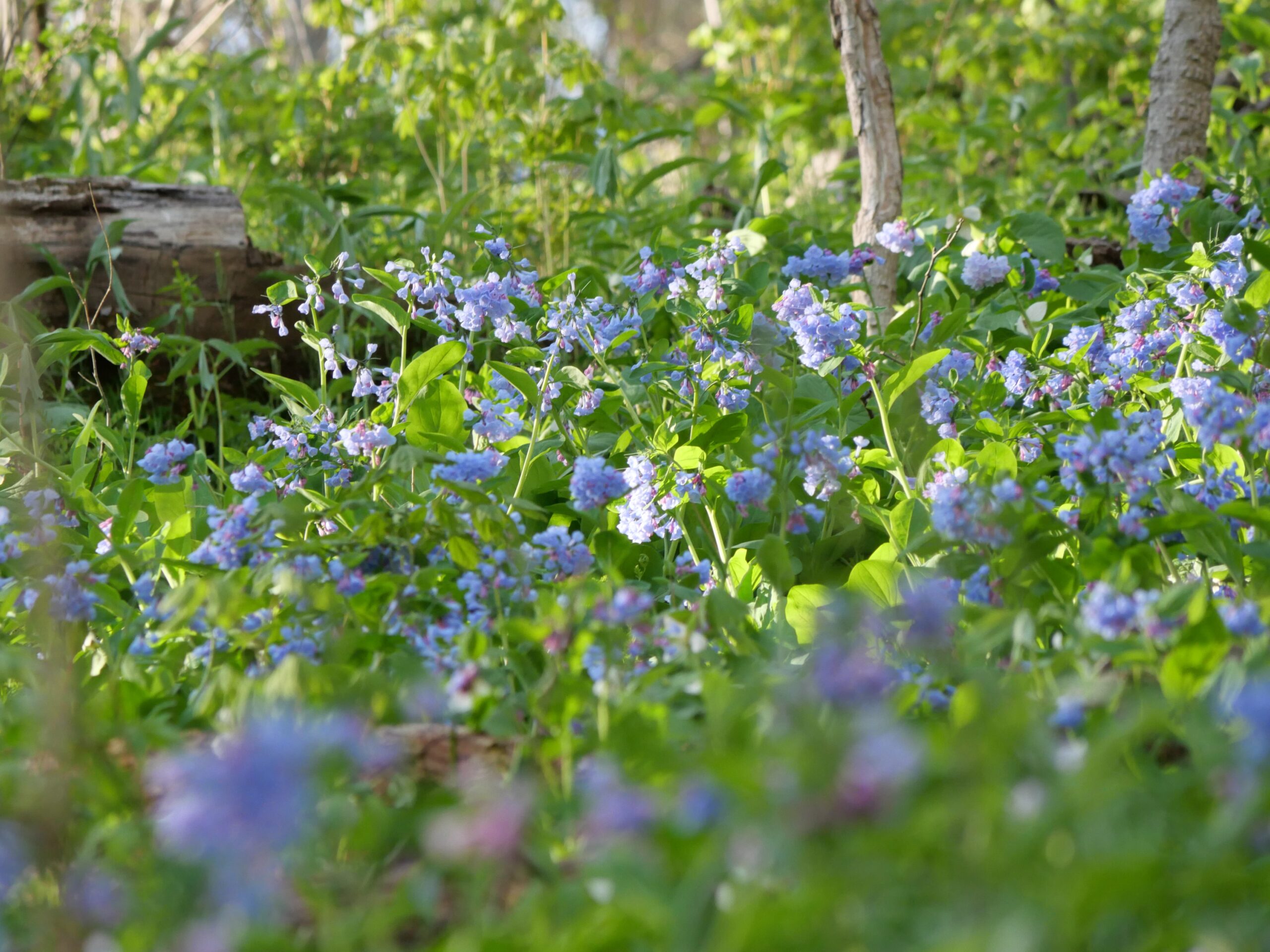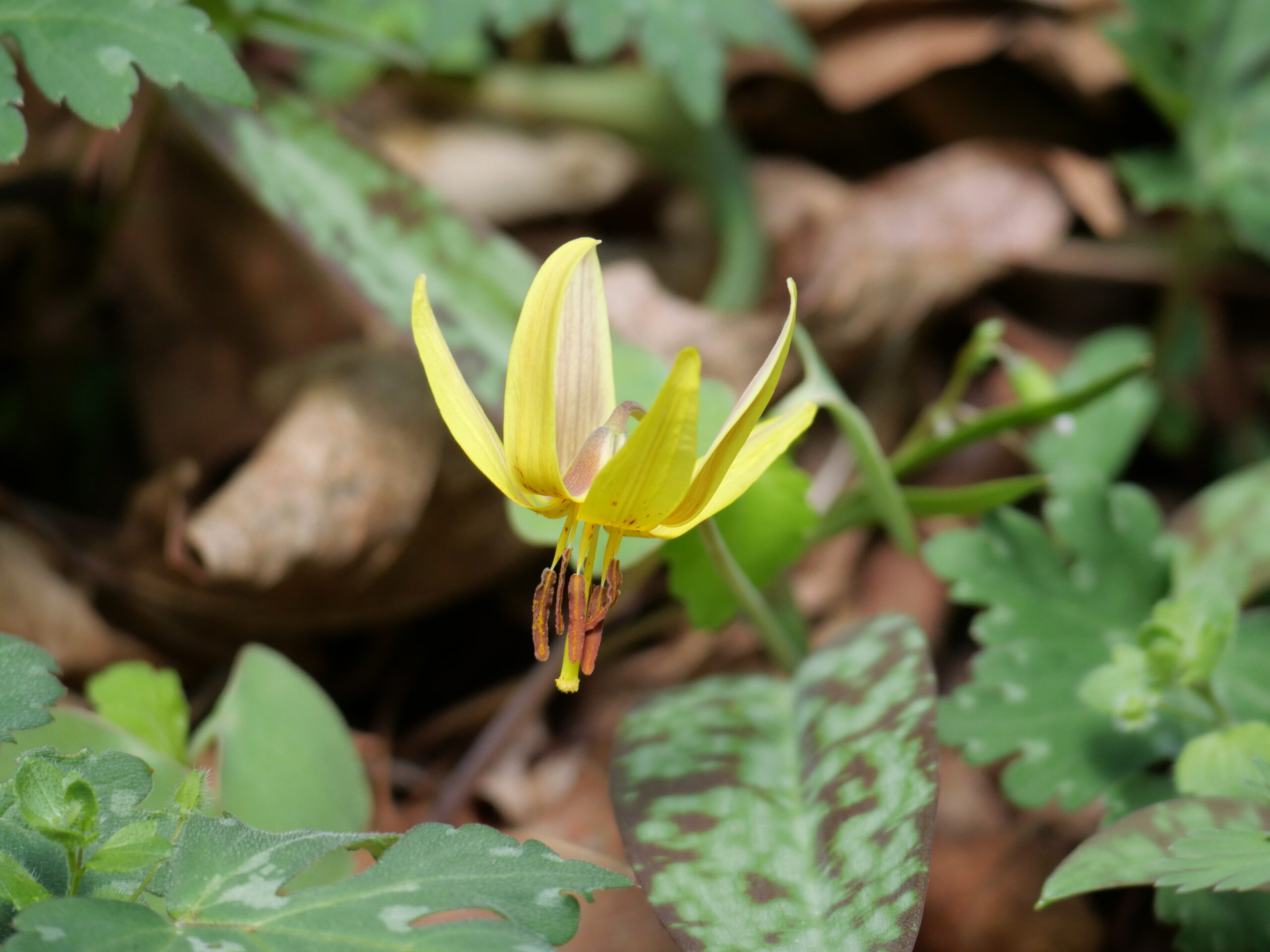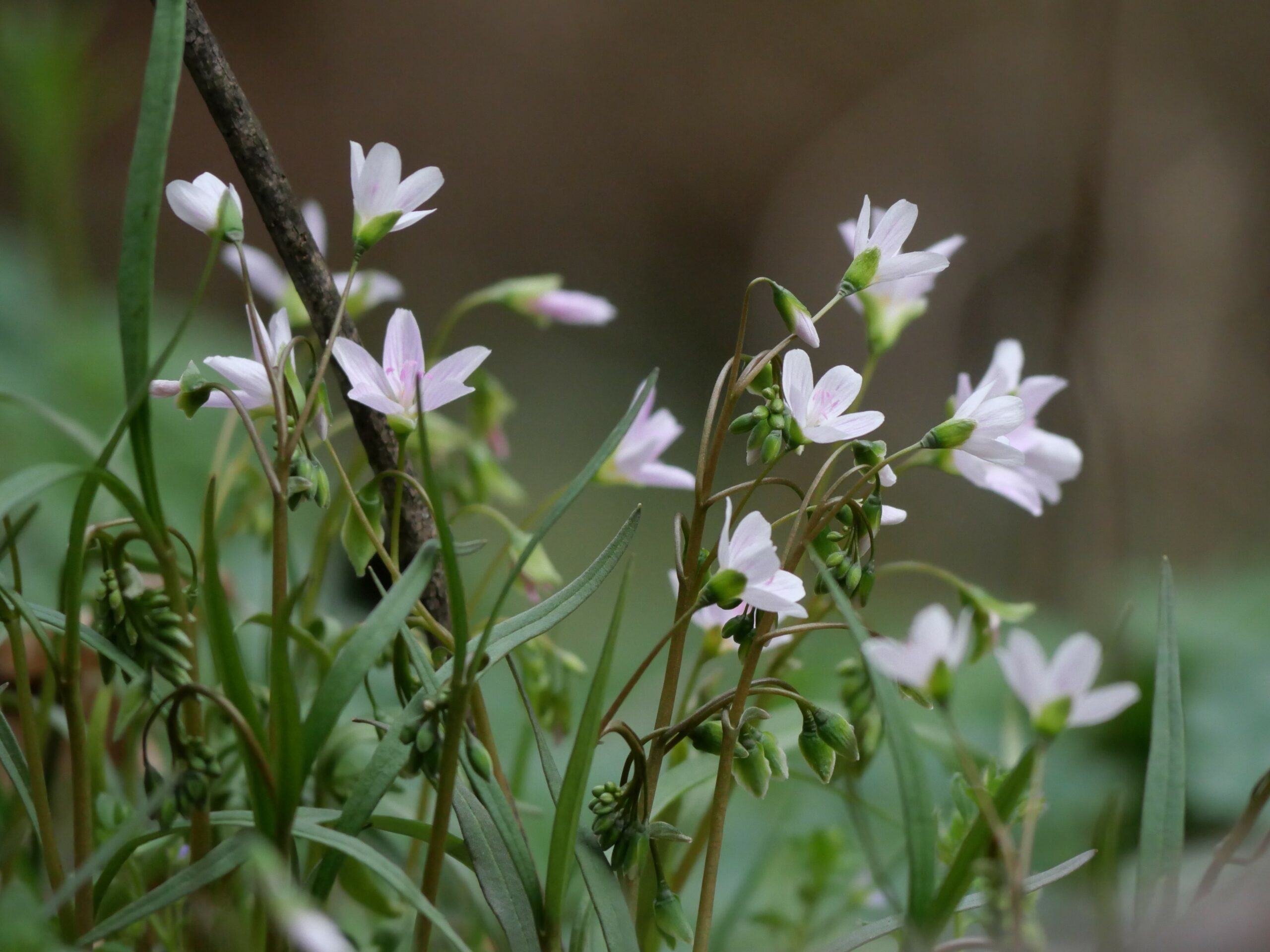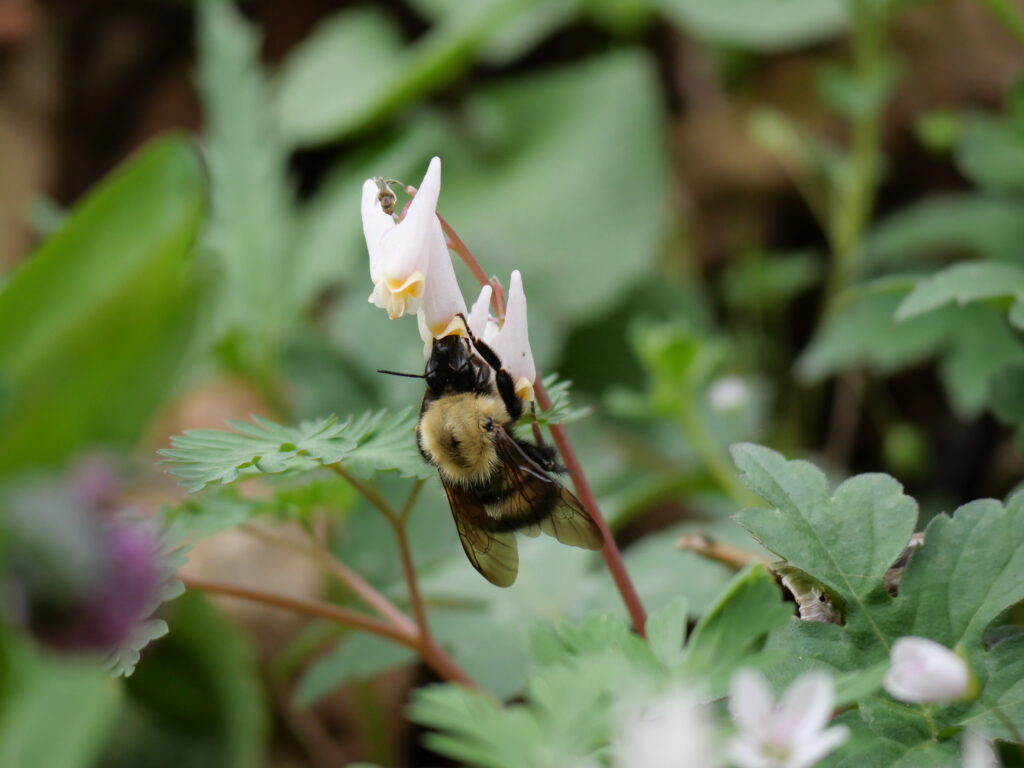By Avery Van Etten, Marketing & Communications Manager
As Earth Day arrives, we are in the midst of spring ephemeral season. A rainbow array of wildflowers heralds a seasonal change and beckons us outside. Shenks Ferry Wildflower Preserve is widely renowned for its expansive display of spring ephemerals, and it’s a very popular site for visitors, where everyone from wildflower novices to ephemerals experts gather to observe this special natural phenomenon. The spring ephemerals can teach us lessons about how to be better stewards of our planet.
 Virginia bluebells cover the hillsides at Shenks Ferry (Photo by Avery Van Etten)
Virginia bluebells cover the hillsides at Shenks Ferry (Photo by Avery Van Etten) Trout lily (Photo by Avery Van Etten)
Trout lily (Photo by Avery Van Etten) Spring beauties (Photo by Avery Van Etten)
Spring beauties (Photo by Avery Van Etten)Spring ephemerals can teach us about resilience – when volunteers remove invasive garlic mustard or multiflora rose that can take over a landscape, native wildflowers like Virginia bluebells and Dutchman’s breeches reappear.
Spring ephemerals can teach us about creativity – they demonstrate a variety of strategies to entice pollinators and continue the survival of their species. Maroon stinking Benjamin trillium produce a smell like rotting meat to attract flies to pollinate them. Flowers like yellow trout lilies encourage ants to transport their seeds by attaching appealing “packets” of fats and sugars to the seeds, which the ants want to eat.

Bee on Dutchman’s breeches (Photo by Avery Van Etten)
Spring ephemerals can teach us about reciprocal relationships – these plants rely on pollinators like bees, flies, and beetles to reproduce and keep their species alive, while the wildflowers can be important food sources for the pollinators. For example, queen bumblebees are one of the earliest insects to emerge after winter, and Dutchman’s breeches are one of the earliest ephemerals to bloom. The bees get nectar and pollen from the Dutchman’s breeches so the queens can survive and begin their new colonies, while the flowers are pollinated by the bees and are able to continue their species, in this relationship that has existed for millions of years.
Spring ephemerals can teach us about legacy – the wildflowers wait underground all year until the brief early spring window arrives when temperatures warm but the trees’ leaves don’t yet block the sunlight, and during that short period of time, the plants bloom, photosynthesize, and create the next generation of spring ephemerals. Although the flowers are only visible for a short period of time, in that brief window while they bloom, they set the stage for the future and continuation of their species – and the future of their ecosystem.
As our natural world faces threats like pollution, habitat destruction, biodiversity loss, and climate change, these lessons can help us take better care of our woods, waterways, and wildflowers. Places like Shenks Ferry Wildflower Preserve – which the Conservancy has protected forever and which is open every day for people to explore – make it easy to fall in love with nature and appreciate the lessons it can teach, lessons which empower us to be better stewards of our planet.
